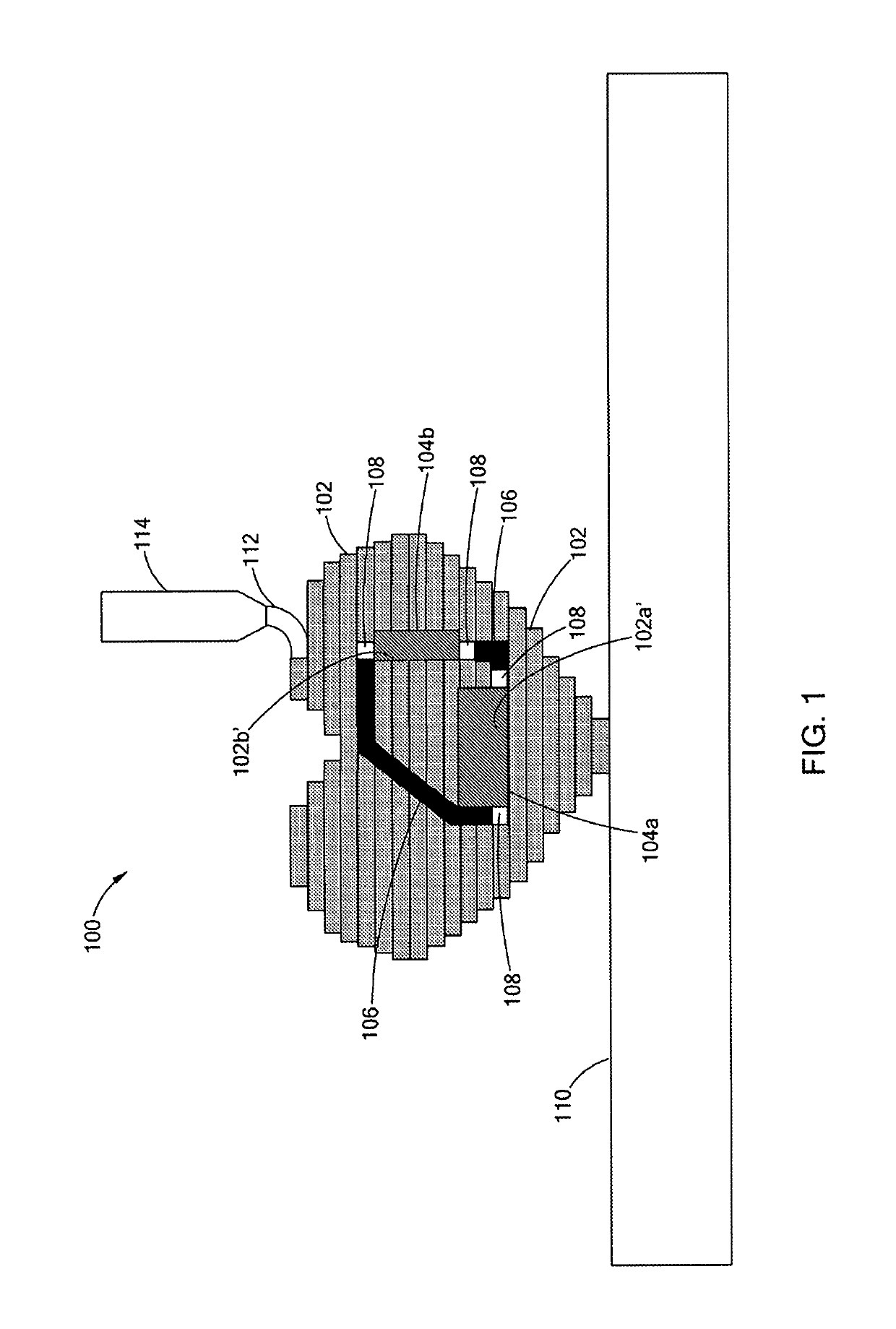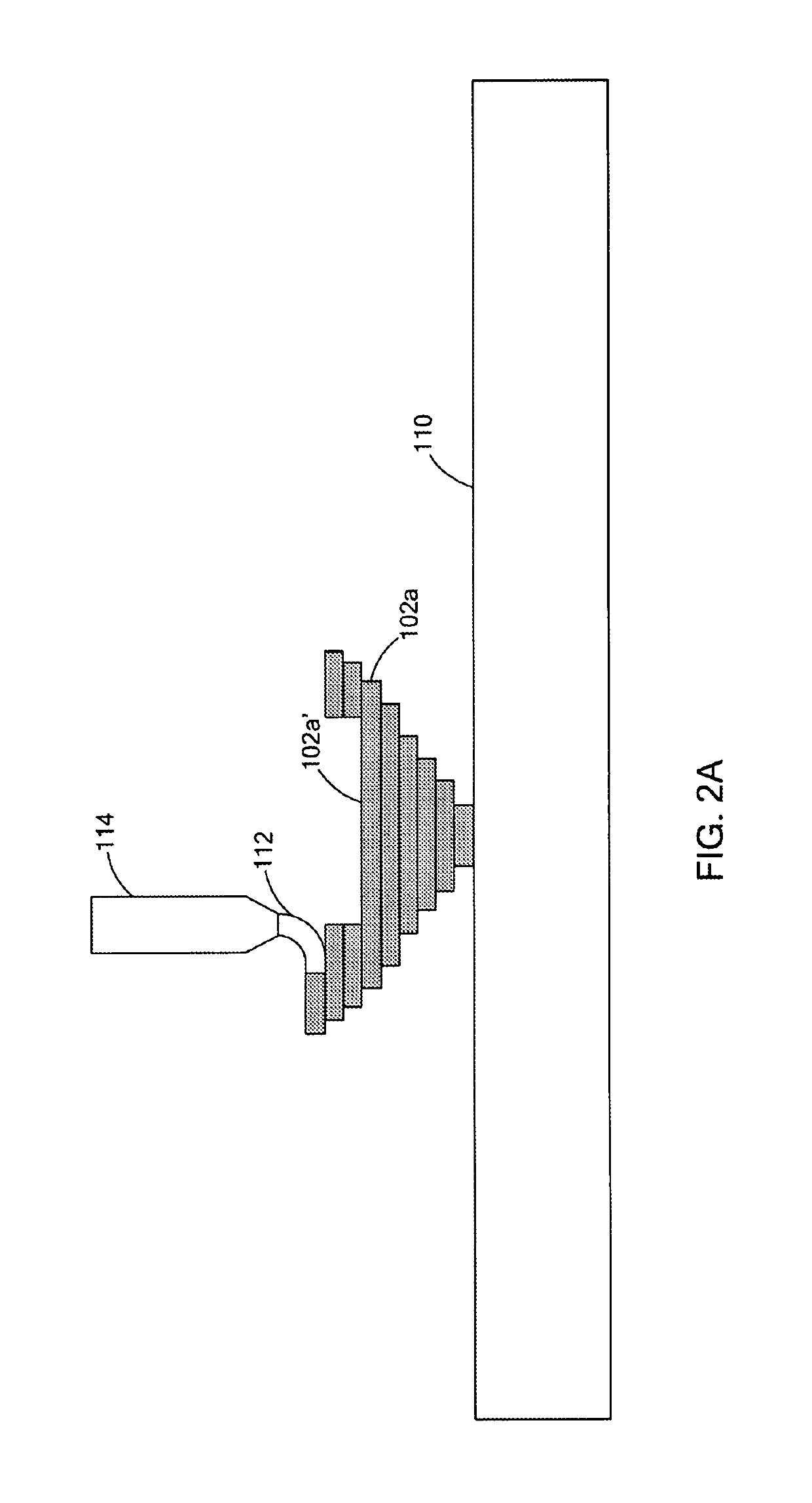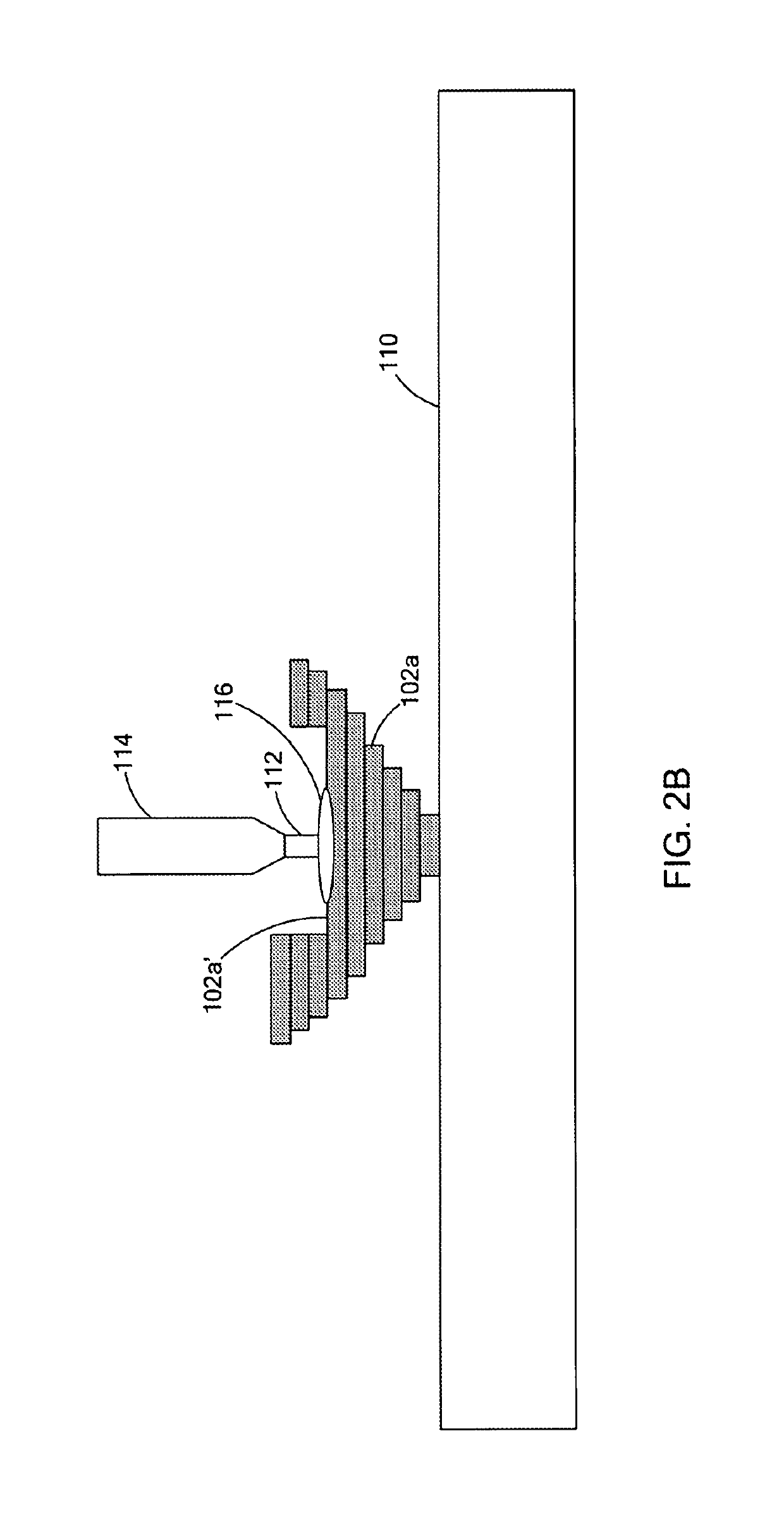Printed three-dimensional (3D) functional part and method of making
a three-dimensional printing and functional part technology, applied in the direction of printed circuit non-printed electric components association, additive manufacturing process, semiconductor/solid-state device details, etc., can solve the problems of increasing the difficulty of producing popular commercial devices, cell phones, printed circuit boards (pcbs) still take days or weeks to prototype, and are typically made by third parties using highly expensive specialized etching/milling equipmen
- Summary
- Abstract
- Description
- Claims
- Application Information
AI Technical Summary
Benefits of technology
Problems solved by technology
Method used
Image
Examples
example 1
[0103]In this example, 11 g of silver flake (5-8 micron diameter / width) capped with long-chain fatty acid residues (see FIG. 11A), 1.25 g pentyl acetate, 0.203 g nitrocellulose, and 0.5 g nitrocellulose additives are mixed together to form a silver ink suitable for 3D printing the above-described exemplary parts. FIG. 12A is a photograph of conductive traces (conductive filaments) of the silver ink printed onto a glass substrate using a nozzle with an internal diameter (ID) of 250 μm. The storage modulus and loss modulus of the silver ink versus applied shear stress is shown in FIG. 12B, and FIG. 12C shows a plot of conductivity versus annealing temperature for the silver ink, where the annealing time was 15 minutes for all elevated temperatures.
example 2
[0104]In another example, carbon nanotubes (CNT) are incorporated into the silver ink formulation. Multi-wall carbon nanotubes functionalized with carboxyl groups are dispersed in the solvent of choice by sonicating under an ultrasonic horn for 10 minutes. In this example, the solvent is pentyl acetate, and the MWCNT-COOH are dispersed at a concentration of 5 wt. % CNT in pentyl acetate. Then, an aliquot of the CNT dispersion sufficient to give the correct final ratio of CNT:Ag is placed into a container and mixed thoroughly with 15 wt. % nitrocellulose solution dispersed in the solvent. Next, additional solvent is added to meet the percentages described below. Next, silver is added in five or less gram increments while mixing for two minutes in a Thinky planetary centrifugal mixer in between Ag additions. The final ink composition includes: 19.23 wt. % pentyl acetate, 1.51 wt. % nitrocellulose (11.8-12.3% nitrogen; Brand: Synthesia E9), 78.38 wt. % Ag flake (2-4 microns in diameter...
example 3
[0106]The ink formulation described in this example is used to 3D print the Arduino board described above, although the solvent is changed to propylene carbonate to slow the evaporation rate. This modification reduces clogging of the nozzle, which is uncapped for deposition. The traces are then cured in an oven at 60° C. for 15 minutes to expedite drying of the extruded filaments. The exemplary ink formulation includes: 17.37 wt. % propylene carbonate, 1.51 wt. % nitrocellulose (11.8-12.3% nitrogen; Brand: Synthesia E9), 80.91 wt. % Ag flake (2-4 microns in diameter and capped with oleic acid), 0.21 wt. % carboxyl functionalized multiwalled carbon nanotubes (length of 10-20 microns and outer diameter of about 30-50 nm).
Water-Based Formulation
[0107]In this example, silver powder is milled, washed and then dispersed in aqueous media. The milling formulation includes 10 g silver powder (2-3.5 μm diameter / width), 2.1 g PVP Mw=40,000, and 100 mL deionized (DI) water. The milling media in...
PUM
| Property | Measurement | Unit |
|---|---|---|
| width | aaaaa | aaaaa |
| internal diameter | aaaaa | aaaaa |
| thickness | aaaaa | aaaaa |
Abstract
Description
Claims
Application Information
 Login to View More
Login to View More - R&D
- Intellectual Property
- Life Sciences
- Materials
- Tech Scout
- Unparalleled Data Quality
- Higher Quality Content
- 60% Fewer Hallucinations
Browse by: Latest US Patents, China's latest patents, Technical Efficacy Thesaurus, Application Domain, Technology Topic, Popular Technical Reports.
© 2025 PatSnap. All rights reserved.Legal|Privacy policy|Modern Slavery Act Transparency Statement|Sitemap|About US| Contact US: help@patsnap.com



